Why America Has an Infrastructure Crisis
Wisconsin's Highway 23 is a perfect example of over building that's driving up maintenance costs.

America spends billions widening roads that don’t need it, like Highway 23 from Fond du Lac to Plymouth. Image: Google Maps
A new report by the Center for American Progress zeros in on an under-appreciated culprit in America’s much ballyhooed infrastructure crisis: All the money wasted on useless roads.
CAP highlights three “white elephant projects” that illustrate how billions of dollars in federal infrastructure funds are squandered thanks to a lack of accountability in the transportation funding process.
“States receive federal highway funding based on formulas set in law, which reflect political negotiations as opposed to objective measures of need or return on investment,” writes CAP’s Kevin DeGood. “This means that states are not required to demonstrate the social, environmental, or economic value of their projects.”
These three projects represent about $1 billion in frivolous spending — and that’s only a small fraction of what’s squandered on dubious road projects each year.
1. Gulf Coast Parkway, Panama City, Florida ($420 million)
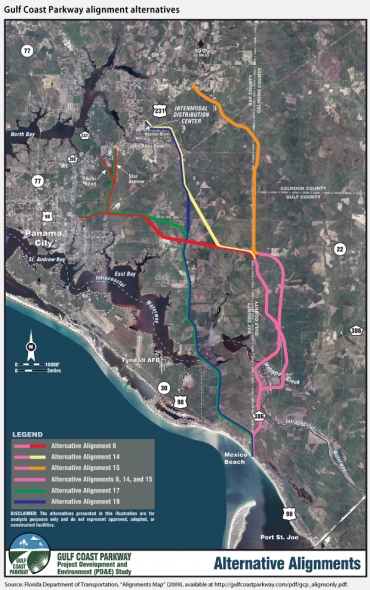
The Gulf Coast Parkway: spending $422 million to accommodate traffic that will never exist. Image: FDOT
Florida’s “Gulf Coast Parkway” is a $420 million, 29-mile highway that will run east of Panama City. The stated purpose is to relieve congestion and promote economic development — boilerplate highway-building jargon. But if you take those objectives at face value, it’s very hard to see how the Gulf Coast Highway will deliver, writes DeGood.
First of all, the state’s traffic growth forecasts aren’t tethered to reality. Florida DOT predicts that traffic will increase 40 to 90 percent on US 98 — for which the Gulf Coast Parkway is held up as an alternative — in the next 20 years.
It’s hard to understand where all that traffic will come from. Panama City only added about 450 people in the last 13 years — a growth rate of about one percent. And the larger metro region is growing at a similar pace. So it can’t be new drivers.
Driving growth per capita isn’t on track to make up the difference. Total miles driven in Florida actually fell 1.7 percent between 2004 and 2014, DeGood reports.
The economic development claims are just as empty. For example, FDOT officials say the road is needed for better access to tourism destinations and transportation facilities. But FDOT’s own analysis says the Gulf Coast Parkway route won’t save travelers any time compared to US 98.
But the flimsy rationale for the project is no obstacle to obtaining hundreds of millions of dollars in federal funds — underscoring a major problem with U.S. transportation policy.
2. West Bay Parkway, Bay City, Florida ($556 million)
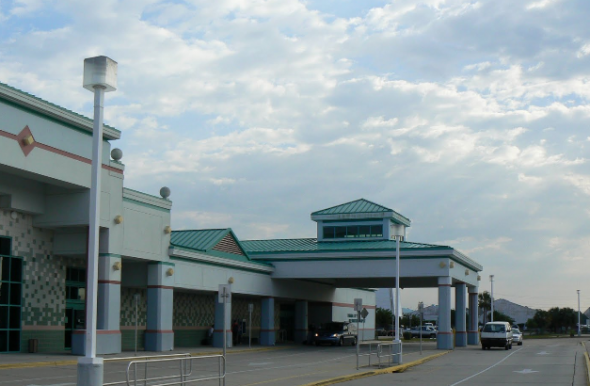
Florida wants to spend $556 million expanding the road to the Panama City Airport. Photo: Google Maps
Right around the corner, Florida is planning another new highway on the other side of Panama City with a lot of the same problems.
The West Bay Parkway is a $556 million highway project that will run east-west for 25 miles, connecting to the Panama City airport. It involves widening CR 388 and constructing a new 10-mile highway segment. Again, the justification is congestion, despite the slow growth of traffic and population in the region.
Only 5,200 vehicles per day currently travel CR 388, well within the comfortable carrying capacity of a two-lane road, according to FDOT. But transportation planners are inexplicably expecting huge growth. Their modeling assumes a 9.1 percent annual increase in traffic every year for 30 years.
FDOT does not explain why traffic growth would so radically outpace local population growth or statewide driving growth. Even the baseline traffic figure FDOT employs is 174 percent higher than current traffic counts on CR 388, “again, without explanation,” notes DeGood.
Even if everything accepting those outrageous projections, FDOT predicts the corridor will generate as few as 7,100 trips per day.
3. Wisconsin State Highway 23 ($145 million)
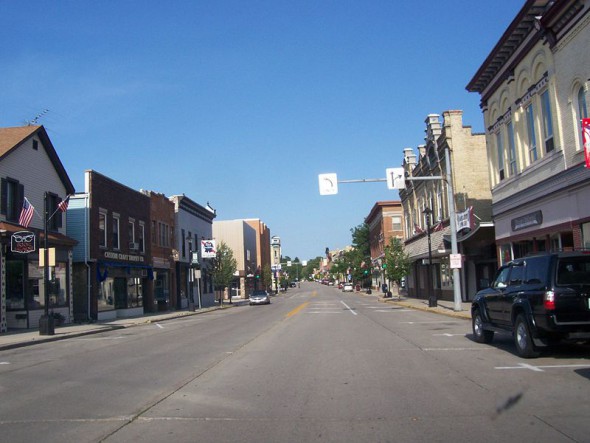
Downtown Plymouth, Wisconsin. Photo: Wikipedia
Florida isn’t the only state where the DOT runs amok. Wisconsin wants to spend $145 million widening State Highway 23 in the central part of the state, converting the rural road from two lanes to a four-lane divided highway for 19 miles between Fond du Lac and Plymouth. The widening would terminate just before reaching downtown Plymouth (right).
DeGood says the state’s case relies on “circular logic.” One of the stated reasons for widening the road is that it doesn’t meet a standard established by the state in a long-range plan called Corridors 2020, from 1989.
He explains:
Why are connector roads marked for expansion in the long-range plan? Because they are deficient. Why are connectors deficient? Because they fail to meet the standard set out by the long-range plan.
The Wisconsin Department of Transportation projects traffic between these two little towns will grow by 70 percent over the next 25 years — which DeGood calls “bewildering.” That rate is 17 times faster than the growth of Fond du Lac’s population.
These outlandish projections were recently challenged in federal court by a lawsuit from 1000 Friends of Wisconsin, an environmental group, a case that is currently pending. Legal intervention like that is rare, even when traffic projections border on fraud. But without the lawsuit, this project would have been green-lighted for federal funding with almost no questions asked.
As lawmakers craft a federal transportation bill, DeGood recommends safeguards to protect dwindling funds from being wasted on white elephants:
These snapshots illustrate why more money should be distributed on a competitive basis — where project sponsors must demonstrate value — and that states that build costly projects that underperform should receive less formula money in the future.
Story by Angie Schmitt. A version of this story originally ran on Streetsblog. Angie Schmitt is a newspaper reporter-turned planner/advocate who manages the Streetsblog Network from glamorous Cleveland, Ohio. She also writes about urban issues particular to the industrial Midwest at Rustwire.com.
Streetsblog
-
Car Culture Cements Suburban Politics
![Sprawl. Photo by David Shankbone (David Shankbone) [GFDL (http://www.gnu.org/copyleft/fdl.html) or CC-BY-SA-3.0 (http://creativecommons.org/licenses/by-sa/3.0/)], via Wikimedia Commons [ https://commons.wikimedia.org/wiki/File%3ASuburbia_by_David_Shankbone.jpg ]](https://urbanmilwaukee.com/wp-content/uploads/2017/10/1024px-Suburbia_by_David_Shankbone-185x122.jpg) Nov 23rd, 2018 by Angie Schmitt
Nov 23rd, 2018 by Angie Schmitt
-
Most Drivers Don’t Yield to Pedestrians
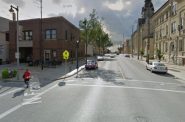 Mar 22nd, 2018 by Angie Schmitt
Mar 22nd, 2018 by Angie Schmitt
-
Jobs Up Yet Driving Down in Seattle
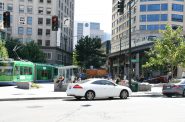 Feb 22nd, 2018 by Angie Schmitt
Feb 22nd, 2018 by Angie Schmitt
Transportation
-
Congestion Pricing Cuts Air Pollution in New York City
 Dec 14th, 2025 by Jeff Wood
Dec 14th, 2025 by Jeff Wood
-
FTA Tells Milwaukee to Crack Down on Fare Evasion — Even Where Fares Don’t Exist
 Dec 12th, 2025 by Graham Kilmer
Dec 12th, 2025 by Graham Kilmer
-
Will GOGO’s Bus Service Ever Get Going?
 Dec 9th, 2025 by Jeramey Jannene
Dec 9th, 2025 by Jeramey Jannene




















You needn’t look further than reconstruction of 27th street or the Zoo interchange. It looks like they’re building infrastructure suitable for supporting space shuttle crawler transporter when a decent resurface job would have been sufficient and I-94 looks to be about 1/2 mile wide now by 92nd street. Nothing LA style freeways to attract people to the neighborhood.
Classic. Don’t forget that the type of economic growth that these highways create is just shitty fast food and strip malls. It actually has *negative* economic growth for legitimate locally owned businesses in downtowns, etc…
I was against adding lanes on 94 from Milwaukee to IL state line. I am against adding lanes on I-39 from Madison south. I am opposed to several other highway projects that add lanes.
However, some highway expansions are necessary and desired. This project in particular has extremely strong support from the local residents in the area. The farce of an argument regarding HWY 23 and their traffic projections ignores that fact that many parts of this highway are already operating above designed traffic levels.
In addition to that, I do not appreciate the slanted reporting and opinion pieces that are passed off as journalism such as this. Heck, even the picture shows a “downtown” Plymouth that must have been an early Sunday morning or something AND was taken roughly 3 miles from the end point of the project. Take a moment to use google streetview for an accurate depiction of the area.
Regarding that project endpoint, besides that fact that it lies 3 miles to the north west of the city, does anyone know that the terminus at both ends of this expansion is a 4 lane divided highway and serves as the only major east-west route between Fon Du Lac (and rest of fox valley) and Sheboygan? It doesn’t stop at a sleepy small town main street like the author depicts.
Finally, the main issue talked about with this highway is the safety. People don’t comment that they want to get to Fon Du Lac faster, they say they want to get there… period. Close class and deaths are all you hear about from local residents. 1000 Friends, which opposes this project, obviously is not friends with those who have died or had accidents on this road I guess.
Politics gets in the way of too many things. Add this to the pile.
If the primary concern is safety (rather than encouraging more and faster traffic), there are ways to make the highway safer that do not widen/expand it.
The widening of highway 23 is not need and without that project the Highway 41 & 10/441 interchange and widening would have proably not have budget shortages and the date to open would still be 2019 instead of 2021. Right now that highway 441 is a death trap and there are car crashes every morning and traffic can be at stand still of up to 45 mins which is scary and not need…. this is just poor planning.
Ooooooooooo, Crisis! Run away! It’s a Crisis! Get yer hip-waders boy, it’s a crisis comin’!
@AG
I travel this stretch of WI-23 often enough to know that the article is right. Expansion is not needed. More than likely there’s a political calculation behind pushing this project.
There’s that much traffic on a two-lane road between Fond Du Lac and Plymouth? That is very hard to believe. And are there lots of fatalities on that stretch of road occurring only because it’s 2 lanes and for no other reason? Your post is mostly overheated rhetoric and shameless emotional ploys AG (talk the families of the dead you heartless ghouls!), but it is light on facts and reason.
Kurt, I appreciate your view as most of where I’m coming from is based on information comes from people who live near and use this HWY. Your counter point in opinion gives credence, although almost everyone else holds the opposite view.
Vincent:
Here are the facts from my earlier post.
Fact: The DOT’s report states that portions are already over capacity. This is not related to future projections. Projections are a red herring.
Fact: No one is providing traffic counts to back up any claims that this road is under it’s capacity and not over crowded during peak times. Unless I see conflicting data, I’m going to believe the DOT that it is already over designed capacity in some areas.
Fact: Article is slanted because 1. It makes it sound like the highway ends right as it gets to a desolate main street (did you see the picture?) instead of connecting a 4 lane hwy to Sheboygan.
Fact: Also related to end points, this is not about just a hwy from Fon Du Lac to Plymouth, it is a cross state junction between Sheboygan to Fon Du Lac and all parts of the state east from there.
Fact: I did indeed try to pull the emotional heart strings on my last point. 🙂
Regarding safety, there may indeed be other solutions but the best I’m aware of are additional lanes in each direction so during peak times cars can pass without going into on coming traffic and a median that provides left turn lanes at busier cross street intersections.